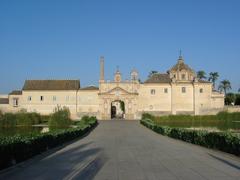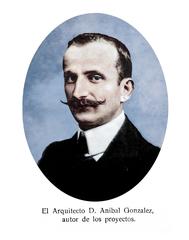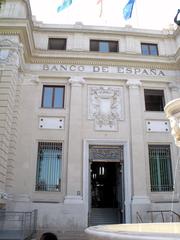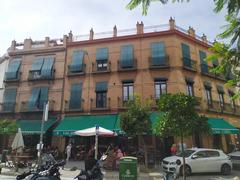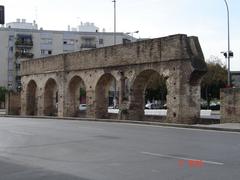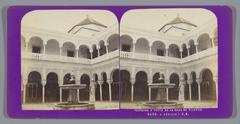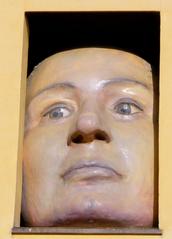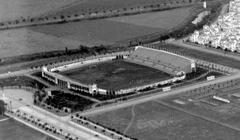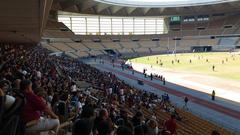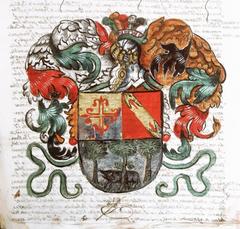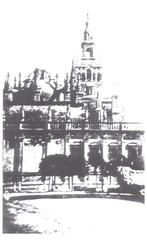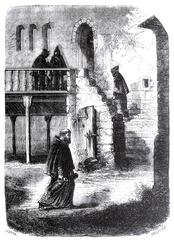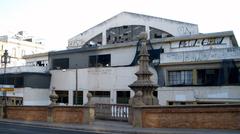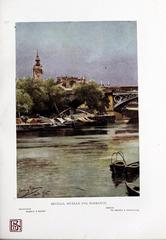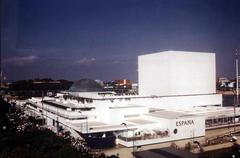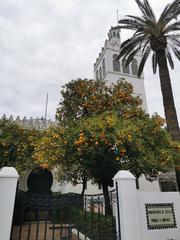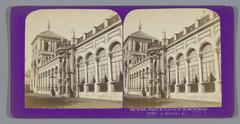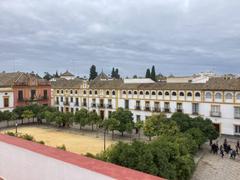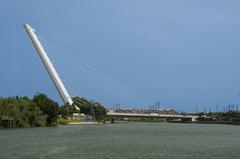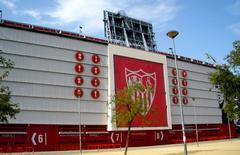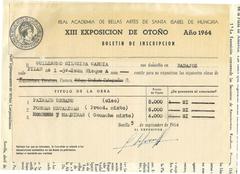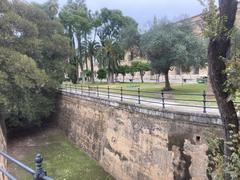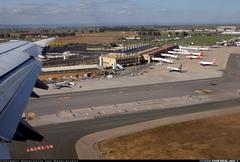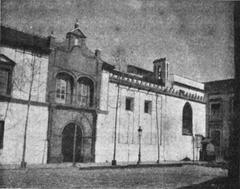Iglesia del Divino Salvador in Seville: Comprehensive Guide to Visiting Hours, Tickets, History, and Practical Insights
Date: 04/07/2025
Introduction
The Iglesia del Divino Salvador (Church of the Divine Savior) is a monumental testament to Seville’s layered history, artistic achievements, and religious traditions. Located in the heart of the city, this Baroque masterpiece stands on a site that has witnessed Roman, Visigothic, Islamic, and Christian civilizations. Its vibrant role in Seville’s community life, especially during Holy Week, and its architectural splendor make it an essential destination for anyone seeking to understand the city’s rich cultural tapestry.
This detailed guide brings together historical background, visitor information, architectural highlights, and essential tips to help you make the most of your visit to the Iglesia del Divino Salvador.
Table of Contents
- Historical Overview
- Architectural and Artistic Highlights
- Religious and Cultural Importance
- Visitor Information
- Nearby Attractions
- Frequently Asked Questions (FAQ)
- Conclusion
- References and Further Reading
Historical Overview
The Iglesia del Divino Salvador stands on a site whose origins stretch back to antiquity. Archaeological evidence points to the presence of Roman and Visigothic structures, but the most significant early development came with the construction of the Mosque of Ibn Adabbas in the 9th century (Wikipedia). This mosque, complete with a courtyard and minaret, was the main Islamic place of worship in Seville until the 12th century. The minaret’s foundations now support the church’s bell tower, and the mosque’s courtyard survives as the Patio de los Naranjos.
After the Christian conquest of Seville in 1248 by Ferdinand III of Castile, the mosque was consecrated as a Christian church. It was eventually replaced by a Gothic church in the 14th century, and then by the current grand Baroque structure, built between 1674 and 1712 after the original church fell into disrepair (visitasevilla.es). The new design, led by architects such as Esteban García and Leonardo de Figueroa, was intended to rival the Seville Cathedral in scale and grandeur.
Architectural and Artistic Highlights
Exterior Features
The church’s main façade, facing the lively Plaza del Salvador, is a striking example of Sevillian Baroque with Mannerist influences. Its symmetrical composition is punctuated by three grand entrances, elaborate stucco work, and sculptural elements, including religious iconography above the central portal (turismosevilla.org). The bell tower incorporates the lower section of the original mosque’s minaret, blending Islamic and Baroque elements.
A unique feature is the Cruz de las Culebras (Cross of the Serpents) on the southwest corner, a remnant of the former parish cemetery, and a ceramic altarpiece by Enrique Mármol Rodrigo.
Interior Spaces
The interior is a Baroque marvel, featuring a rectangular floor plan (56 x 30 meters) with three naves of equal height, separated by robust columns and arches. The central nave is particularly wide and luminous, with barrel and groin vaults creating a sense of grandeur (spain.info). The crossing is surmounted by a majestic dome (cupola) that floods the space with natural light.
Altarpieces and Artistic Treasures
There are 14 altarpieces throughout the church, including:
- Main Altarpiece: Designed by Cayetano de Acosta (c. 1779), a tour-de-force of gilded woodwork and religious symbolism (sevillaxm2.com).
- Altar of Virgen de las Aguas: Created by José Maestre in 1731, housing a 13th-century Marian image.
- Sculptures: Works by leading Sevillian artists such as Juan Martínez Montañés (e.g., “Our Father Jesus of the Passion”) and Juan de Mesa (“Holy Christ of Love”) are venerated during Holy Week processions (turismosevilla.org).
- Baroque Organ: An 18th-century instrument known for its power and sonority.
Patio de los Naranjos
This courtyard preserves the mosque’s original ablution area, with rows of orange trees and ancient paving stones. It offers access to archaeological remains, including Roman and Visigothic fragments, and the 14th-century Pineda family chapel (introducingseville.com).
Religious and Cultural Importance
The Iglesia del Divino Salvador has served as both a collegiate and parish church, holding a position of prestige just below the Cathedral in Seville’s ecclesiastical hierarchy (Cathedral of Seville). It is the headquarters for major brotherhoods (hermandades) central to Seville’s renowned Semana Santa (Holy Week) processions, and its vibrant parish life continues to anchor the local community.
The church’s designation as a Bien de Interés Cultural and as a National Artistic-Historic Monument underscores its significance (Wikipedia).
Visitor Information
Opening Hours
Current hours for cultural visits are (Catedral de Sevilla):
- Monday to Thursday: 10:15 am – 5:30 pm
- Friday and Saturday: 10:15 am – 6:00 pm
- Sunday: 2:30 pm – 7:00 pm
Note: Hours may change during holidays, religious services, or special events. Always check the official calendar before your visit.
Tickets and Entry Fees
- Single Entry: Provides access to the church’s main spaces; tickets can be purchased at the entrance or online.
- Combined Ticket: Includes entry to the Seville Cathedral, the Giralda, and Iglesia del Divino Salvador.
- Discounts: Available for students, seniors, groups, and locals.
- Free Entry: For worshippers during mass, children, unemployed persons, and people with disabilities.
Accessibility
- Wheelchair Access: Ramps and accessible restrooms are provided.
- Assisted Visits: Staff can accommodate special needs upon request.
- Note: Some areas, such as the bell tower and crypt, may have limited access for visitors with mobility challenges.
Guided Tours and Special Experiences
- Guided Tours: Available in multiple languages, covering art, history, and architecture. Advance booking is recommended.
- Special Experiences: The “Huella de lo Sagrado” guided tour offers exclusive access to the rooftops, crypt, and camarin (sacristy).
- Photography: Permitted, but flash and tripods are generally restricted.
Travel Tips
- Best Time to Visit: Early weekday mornings or late afternoons are less crowded.
- Dress Code: Modest attire is expected, especially during services.
- Getting There: Centrally located in the Alfalfa district; accessible by foot, public transport, or taxi. The nearest metro is Puerta de Jerez (10-minute walk).
Nearby Attractions
The Iglesia del Divino Salvador is walking distance from several of Seville’s top landmarks:
- Seville Cathedral and Giralda Tower
- Real Alcázar
- Plaza del Salvador (great for people-watching and local cafés)
- Santa Cruz neighborhood
- Metropol Parasol (modern architecture with city views)
Frequently Asked Questions (FAQ)
Q: What are the visiting hours?
A: Monday to Thursday, 10:15 am–5:30 pm; Friday/Saturday until 6:00 pm; Sunday, 2:30 pm–7:00 pm. Check the official website for updates.
Q: How much are tickets?
A: Prices vary; single and combined tickets are available, with discounts for students, seniors, and locals.
Q: Is the church accessible to visitors with disabilities?
A: Yes, ramps and accessible restrooms are available.
Q: Are guided tours offered?
A: Yes, in several languages. Special tours include access to the crypt and rooftops.
Q: Can I take photos inside?
A: Yes, but avoid using flash or tripods.
Q: What is the best time to visit?
A: Weekday mornings or late afternoons tend to be quieter.
Conclusion
The Iglesia del Divino Salvador is a cornerstone of Seville’s spiritual and cultural heritage. Its rich history—from mosque to Baroque church—intertwines with the art, architecture, and living traditions of the city. Whether you come for the history, the art, or the vibrant parish life, a visit here offers a profound connection to Andalusia’s past and present.
Plan your visit by reviewing up-to-date hours and ticket options, consider joining a guided tour for deeper context, and don’t miss nearby attractions to round out your Seville experience. For more information, explore virtual tours and the Audiala mobile app for enhanced engagement.
References and Further Reading
- Iglesia del Divino Salvador Seville: Visiting Hours, Tickets, and History of Seville’s Historic Church
- Iglesia del Salvador: Patrimonio Artístico y Espiritual de Sevilla
- Iglesia del Divino Salvador in Seville: Visiting Hours, Tickets, and Architectural Highlights
- Iglesia del Divino Salvador Cultural Guide
- Iglesia del Salvador (Sevilla) - Wikipedia
- Catedral de Sevilla: Iglesia del Salvador Visiting Information
- Seville City Guide: Iglesia del Divino Salvador
- Wanderlog: Best Time to Visit Seville
- Wikipedia French: Église du Divin-Sauveur de Séville
For high-resolution images and interactive maps, refer to the official tourism and cathedral websites listed above. Use the Audiala app for guided audio tours and up-to-date visitor information.
